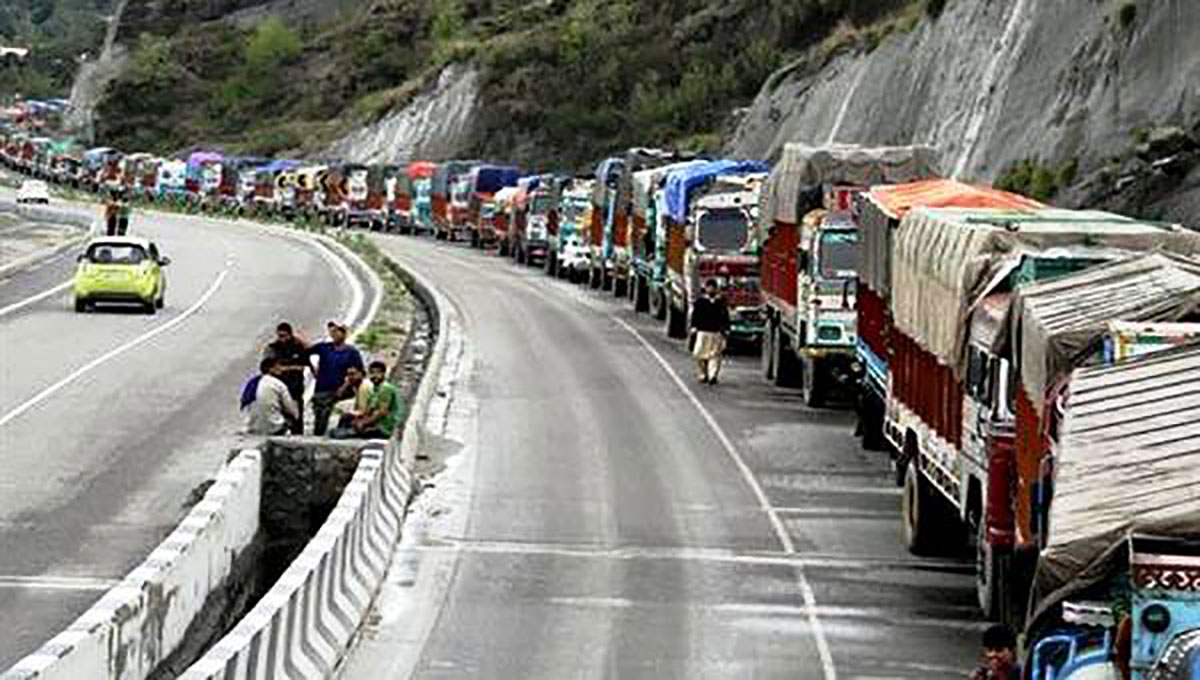A string of villages near Bijbehara rely primarily on fields of illegal crops for sustaining themselves. SHAMS IRFAN walks through one of these villages, and explores the tangled web of poppy cultivation.
At noon, a group of young boys sit near a large field of cannabis in the shade of a big Chinar tree, smoking cigarettes. They are all in their teens, and they’re taking a break after having worked on the fields since the morning. The boys were busy extracting Bhang [Cannabis] for a local cultivator who employs them for a day’s work on his fields.
During cultivation season, Dupathyaar—a small village about seven kilometers from Bijbehara town—is abuzz with youngsters from nearby villages, who make themselves available for extraction of Bhang in exchange for money. As one walks towards the village, a narrow dusty road cuts through large agriculture fields where overgrown Bhang and opium plants fill the foreground. And in these fields, people are busy stacking freshly cut cannabis plants for extracting Charas.
Any outsider visiting the village of Dupathyaar is often greeted with suspicion. People of this village often surround visitors and ask them questions about the purpose of their visit, or enquire about who they are visiting in the village. Even a single contradictory statement can lead to instant trouble for an outsider, because residents don’t trust anyone who they are not familiar with. A visitor would need to fear even the women of Dupathyaar. They are always actively involved cultivating and extracting Bhang.
The toughest thing in this village is to get people to talk about their livelihood. An elderly person, who wished not to be named fearing reprisal from the mafia, said that the cultivators pay school-going students Rs 420 for a day’s work in cannabis fields. The risk factor is often included in the amount.
Mohammad Amin, who hails from a neighboring village, said that during the extraction period, there are almost no students visible in schools. “This is the time of year they [students] look forward to as they get to earn a handsome amount by working in the cannabis fields. Most of these children in the age group of 10 to 16, and they bunk their classes to earn some quick money,” he said.
According to reliable sources, Dupathyaar is the biggest producer of cannabis in north India. “Out of 360 households in Dupathyaar about 358 are involved in cannabis [Bhang] cultivation. Their main source of livelihood depends on the cultivation of Bhang,” said a local social activist who has worked in the area for some time.
The main areas involved in the cultivation of cannabis are Dupathyaar, Hayar, Takibal, Ghantalipora, Kandipora, Semthan, Tulkhan, Thajiwara, Guri, Kanilwan, Veeri and Krendi. These areas are in the Bijhbehara belt.
For the past few years, people from the main town of Bijbehara have actively pursued authorities to rid the area of this menace. “Every time they shut us up with some cosmetic majors,” said Shah Sahab, who lives in the housing colony of Bijbehara. “Due to easy availability of Bhang and Charas in the periphery, the number of young addicts in our colony is on the rise.”
Locals blame police for working as facilitators in this illicit trade. In the last few days, authorities have raided Dupathyaar, Takibal and other areas several times to destroy the crop. But locals claim that they never destroy the crop completely. “In fact they are making things easier for the cultivators as they only uproot or cut the crop by using cutters, leaving the cannabis plants there on the fields,” said Amin.
“After police are gone, cultivators come back and take these uprooted plants home. They then dry them and grind these plants into Bhang powder which is more valuable than Charas, and has a high demand in the international market,” he added. The only way to destroy the crop completely is by burning it to the ground.
But the alleged nexus between the drug mafia and police prevent them from doing so. According to police, the instant rise in cultivation of these illicit crops in Kashmir is because of the huge demand of Bhang in Punjab and other parts of India. Over the last few years, farmers in Bijbehara and Shopian have turned to cultivating these illegal crops, as they get higher returns than the usual traditional cash crops. In addition, these illegal crops require less irrigation and there is also no danger to the crop in case of bad monsoon.
According to police records, in 2009, law enforcement agencies seized 168.775 kilograms of Charas, 01.390 kilogram of Opium and 10961.505 kilogram of Opium derivatives from drug traffickers. Similarly, by the end of April 2010, 51.974 kilograms of Charas, 02.414 kilogram Opium, 16577.550 kilogram of Opium derivatives, and 68 kilogram of Bhang and 24 kilograms of Ganja were seized by police. So far this year, 21 cases were registered under Narcotics Drugs and Psychotropic Substances act [NDPS] at the Awantipora police station. According to sources, Deputy Commissioner Islamabad, Kifayat Hussain Rizvi, has already taken some concrete steps in order to discourage people of these villages from cultivating illegal crops.
But despite making several attempts to reach Islamabad’s DC, he was not available for comment.
“If authorities keep neglecting our pleas to stop this illicit trade in our neighborhoods, soon we will lose our entire young generation to this menace,” said Shah Sahab.















